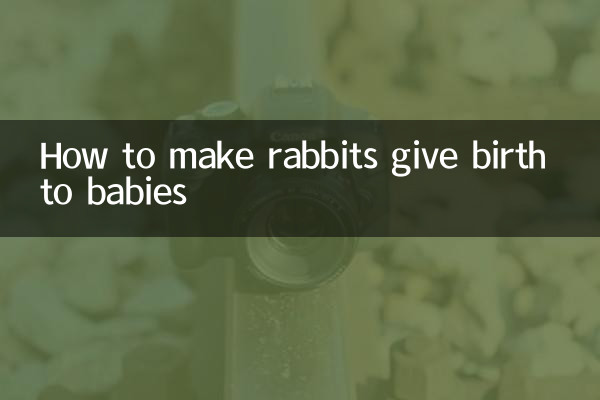How to make rabbits give birth to babies
Raising rabbits can be a fun and challenging activity, especially if you want them to breed. In order for rabbits to successfully give birth to baby rabbits, you need to understand rabbit breeding habits, feeding and management, and precautions. The following is a detailed guide on rabbit breeding, combining hot topics and hot content in the past 10 days.
1. Basic conditions for rabbit breeding

Rabbit breeding needs to meet the following basic conditions:
| Conditions | Description |
|---|---|
| age | Female rabbits are usually over 6 months old, and male rabbits are usually over 7 months old before they can breed. |
| health status | Rabbits must be healthy and free of infectious diseases or parasites |
| Nutritionally balanced | It is necessary to provide high protein and high fiber feed before breeding. |
| environment | Quiet, clean, suitable temperature (15-25℃) |
2. Determining the estrus period of rabbits
The key to rabbit breeding is to catch the estrus period. Here’s how to tell if a rabbit is in heat:
| performance | Description |
|---|---|
| active behavior | The female rabbit frequently rubs against the cage or bites things |
| vulvar changes | The female rabbit’s vulva is red and swollen, pink or purple in color |
| Appetite changes | Decreased appetite and showing interest in male rabbits |
3. Steps of breeding rabbits
Breeding is the core part of rabbit reproduction. The following are the specific steps:
| steps | Operation |
|---|---|
| 1. Choose the right male rabbit | Male rabbits need to be healthy, energetic, and not related to female rabbits |
| 2. Breeding time | Rabbits are most active in the early morning or evening |
| 3. Breeding environment | Put the female rabbit into the male rabbit cage to prevent the male rabbit from becoming nervous |
| 4. Observe behavior | The male rabbit will chase the female rabbit and will fall sideways after successful mating. |
| 5. Repeat breeding | Repeat every 8-12 hours to increase the pregnancy rate |
4. Management of rabbits during pregnancy
Female rabbits need special care after pregnancy. The following are the key points of management during pregnancy:
| stage | Things to note |
|---|---|
| 1-15 days | Keep quiet, avoid being frightened, and provide plenty of water |
| 15-30 days | Increase nutrition, supplement protein and calcium |
| Before giving birth | Prepare the birthing box and lay it with soft grass or sawdust |
5. Rabbit delivery and postpartum care
Rabbit births are usually uneventful, but postpartum care is crucial:
| matters | Description |
|---|---|
| delivery time | Mostly at night or early morning, lasting 30 minutes to 2 hours |
| Number of baby rabbits | 4-12 animals per litter, average 6-8 animals |
| postpartum checkup | Make sure the mother rabbit is breastfeeding and the baby rabbits are normal |
| Nutritional supplements | Postpartum female rabbits need high-energy feed |
6. Common problems and solutions
You may encounter some problems during rabbit breeding. The following are common problems and solutions:
| question | Solution |
|---|---|
| Female rabbit refuses to breed | Check whether it is in estrus or replace the male rabbit |
| pseudopregnancy | Observe for 2 weeks and then breed again. |
| Baby rabbit died | Check the lactation status of the female rabbit and supplement nutrition |
Summary
Breeding rabbits is a process that requires patience and care. From breeding to delivery, every step needs scientific management. Through the above steps, you can successfully make rabbits give birth to baby rabbits and enjoy the fun of breeding. If you have other questions, you can refer to recent hot topics or consult a professional veterinarian.

check the details

check the details